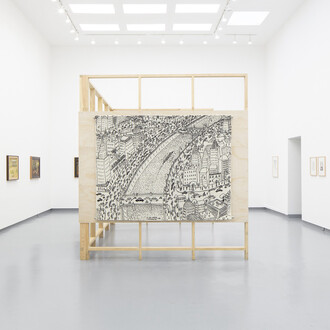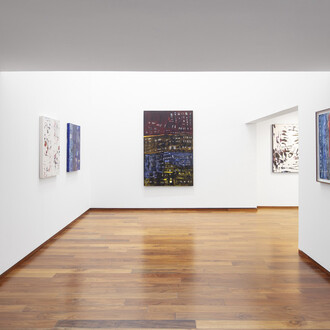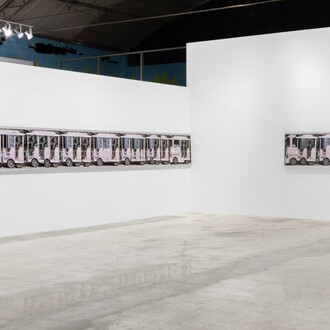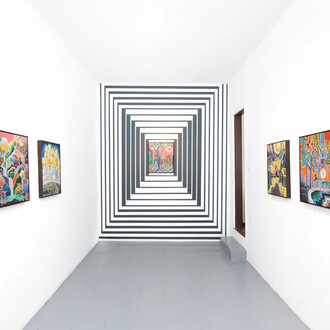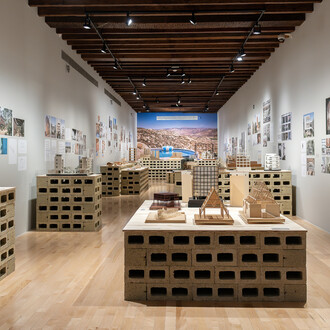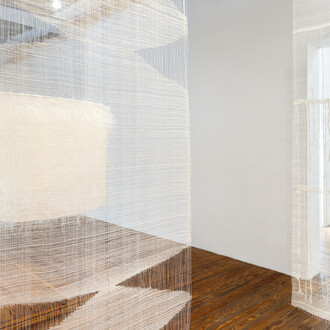This exhibition originated with an open reflection on the current tendencies that are incorporated in and extended to the notion of contemporary painting. The multiplicity of works and techniques comprised by this show make apparent the formal instability when we talk about painting. At the same time, it considers how this variety turns into multiple reflections that are no longer about the medium —or rather about the apparatus of the "picture"— but instead about pictorial expression itself. Here we have artistic practices that go beyond the limits of the canvas to formulate different questions about how we see and represent the world. How, then, are we to understand painting under these new circumstances? What does it really mean to paint today? This exhibition presents as many answers as possible through the work of Elsa-Louise Manceaux, Michael Conrads, James Benjamin Franklin, Javier Areán, Sebastian Black, SANGREE and Néstor Jiménez.
In order to establish a relationship among the different pieces that are part of this show, we have to refer to the genre of the personal essay, which these artists use to take a stand vis-à-vis the idea of contemporary painting. Elsa-Louise Manceaux, for example, regards painting as a way of getting beyond the multiple references that bombard us through the constant flow of images. Sebastian Black raises questions about what abstract painting means, and how it can be read today. Coming from Black's particular sense of humor, the titles of his works suggest moments that are part of the day-to-day narrative, offering a way of reading each work. Finally, Javier Areán constructs figurative images that question their own nature, as well as their relationship to the historical and social context of which they are a part.
Each of these projects questions the conditions of contemporary painting, which, as mentioned above, cannot be limited to the traditional format of the canvas. This creative logic encompasses the work of James Benjamin Franklin, for example, who creates physical supports for his pieces by using plaster canvas, wire mesh, sand and acrylic, among other materials, enabling him to generate uneven forms that engage in dialogues with objects and with the relationships we might have with them. For its part, SANGREE presents pieces resembling bas- reliefs in sheets of Ultracal on which certain pre-Hispanic icons are modified or reinterpreted. The use of such media also questions the perspectives from which we interpret the pieces, as we can see in the works presented by Michael Conrads, who adds another layer of meaning to painting through an in situ mural drawing that functions as a sort of matrix for his work and as a mediator between the paintings themselves and reality.
The exhibition closes with a special project by Néstor Jiménez in the video room. His work, like a political gesture from the standpoint of painting, involves the relationship between the processes of destruction, construction, distortion and propagation of Marxist-Leninist thought in social structures on the eastern outskirts of Mexico City, reprising and analyzing the iconography used by the popular insurrection movements of the 1980s.
The title of the show alludes to a homonymous series that Barnett Newman made from 1966 to 1970. The American painter was interested in getting viewers to feel the same impact that painting had had on him: the feeling of its own totality, of its own separation, of its own individuality. In this sense, the exhibition is put together as an essay that reflects on the conceptual and technical formulations of pictorial expression today. The concern that guides the overall course of the show is not the continued relevance of painting in the contemporary context, but rather an open reflection on the kinds of pictorial projects that make it possible to generate new experiences in the world today.
Each of the works presented in Who's Afraid of Red, Yellow and Blue affirms the materiality of painting, reflecting different ways of inserting it in the discourse of contemporary art. As David Joselit has remarked, "The body of painting is submitted to infinite dislocations, fragmentations, and degradations," blurring boundaries and always positioning itself beside itself.





